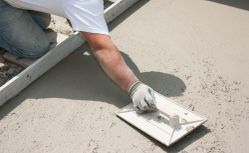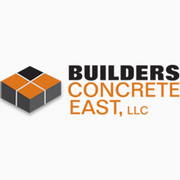
Concrete is a durable, versatile building material great for flooring, driveways, patios, and foundations. However, since it’s porous, sealing the material is an essential step to ensure liquids, dirt, and other substances don’t compromise its integrity and aesthetic. Below, learn more about this process.
Why Should You Seal Concrete?
Snow, rain, and ice go through a freeze-thaw cycle, expanding and contracting as temperatures fluctuate. This can lead to cracking and damage if moisture gets inside the concrete. Cleaners, rock salt, dirt, and chemicals can also permeate the surface, degrading and discoloring it. A sealant will protect the material so nothing penetrates it, which then prolongs its lifespan.
Additionally, if concrete stays moist for extended periods, it can become a breeding ground for mold and mildew. Besides the health risks that accompany excessive mold, you'll also notice green areas where spores are accumulating.
When nothing can penetrate the surface, the concrete is more durable against damage. Even UV rays will have a tough time weakening and discoloring the material. Other substances, such as engine oil, are easier to clean as well, eliminating stain risks.
How Do You Do It?

When it's time to seal the material, make sure you have the right product. Integral sealants are typically added to the concrete mix before you leave with it, ensuring sealing begins once the concrete is poured. Alternatively, penetrating sealers act as chemical barriers against moisture and salt, creating breathable surfaces so vapors can filter out. Finally, decorative sealants provide satin or shiny finishes, which alters the surface's look and texture. Consider these if you want to change the style, color, and feel of the finished product.
Pick a time where the weather is dry and the temperature will be above 50 degrees Fahrenheit for at least three days. For newly poured concrete, wait at least a month before sealing.
Then, gather protective gear, including goggles and gloves, and read the sealant's instructions thoroughly. Powerwash the surface with hot water to remove any stains or debris and open the concrete's pores, which helps the sealer bond more easily. Wait for the material to dry before beginning to seal.
Once you've followed the manufacturer's steps, keep heavy traffic away from the surface for at least 48 hours so it cures completely. Finally, clean your tools and equipment right away to prevent the sealer from drying on them.
If you need concrete for an upcoming project, contact Builder’s Concrete East. Located in Windham, CT, this company offers ready-mix concrete and interlocking blocks to suit your needs. Known for reliability and professionalism, their knowledgeable team can help you find exactly what you’re looking for. For more information on their products, call (860) 456-4111 or visit their website.
About the Business
Have a question? Ask the experts!
Send your question

